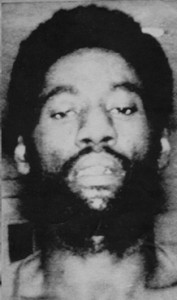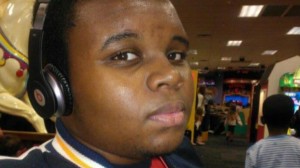In 1986 a black Massachusetts prisoner serving life for murder brutalized a Maryland couple during a weekend furlough. The prisoner’s name was Willie Horton. During the 1988 presidential election the George H.W. Bush campaign made extensive use of the story and the image of Willie Horton to attack his opponent, Massachusetts Governor Michael Dukakis. Dukakis was branded as a coddler of criminals, unable and unwilling to protect the public. There was of course nothing new about the tactic of manipulating white fear of black criminality for political gain. (Dukakis neither initiated the furlough program nor did he have control over it as governor.) But the spectacular success of the ploy in the 1988 presidential campaign made “Willie Horton” shorthand for this maneuver.

The Ferguson police department tried to “Willie Horton” Michael Brown when the shooting death of the unarmed black teenager by Officer Darren Wilson in August led to intense criticism of the department. The police were suspected of bungling the investigation of Brown’s death if not covering up. They were blamed for heavy handed but ineffectual efforts to suppress the protests that followed. Apparently hoping to redirect public perceptions, the department released a surveillance video of the 6’ 4” Brown robbing a convenience store just before his encounter with Officer Wilson. Brown is seen taking handfuls of cigarillos, then shoving and menacing the middle-aged shopkeeper who attempted to prevent his departure. The video seemed the perfect vehicle to reframe Brown as a thug for the media and public, as an object of fear and loathing.
It didn’t work. Michael Brown has remained a symbol of discrimination in much of the establishment media and public perception despite a backlash by supporters of the Ferguson police.
The convenience store video was grist for the mill for Rudy Giuliani, Rush Limbaugh and other entrepreneurs of reaction. But mainstream media continue to portray demonstrations sparked by the death of Michael Brown sympathetically – despite the usual peaceful/violent protestor distinction and with a tendency to overdraw the difference between white and black responses.
The effort to make the Ferguson shooting a story about police on the ragged frontline protecting America from black criminality flopped. The main story line remains a black community reacting to the loss of yet another young man that should not have happened, and would not have happened if Brown had been white.

How can we explain the failure to turn so promising a candidate as Michael Brown into yet another Willie Horton? Give some credit to pushback against excessive use of stop and frisk. Give credit to growing public awareness of the impact of the war on drugs on black communities, communities so many young people leave for prison. Some credit is also due to the steady trickle of exonerations of prisoners for crimes they did not commit.
What is happening here is both like and unlike Civil Rights Era reactions to the media images of Bull Connor targeting demonstrators with fire hoses and attack dogs in Birmingham, Alabama. Graphic exposure to Connor’s tactics shocked and changed the American public. By contrast, the news images of the death of Michael Brown reveal nothing unfamiliar.
Within days Brown was no longer the last unarmed black shot by the police. The quantum jump is in the appreciation of the meaning of this familiar story. The story line that is taking hold is about yet another casualty of American methods of policing black communities. Mike Brown the thug and Mike Brown the gentle giant are distractions, red herrings.The Willie Horton ploy may not be ready for retirement. But it is a less reliable means of preventing many
members of the white public from sympathizing with – and even identifying with – black victims of occupation style policing.

 Research to Improve Policy: The Scholars Strategy Network seeks to improve public policy and strengthen democracy by organizing scholars working in America's colleges and universities. SSN's founding director is Theda Skocpol, Victor S. Thomas Professor of Government and Sociology at Harvard University.
Research to Improve Policy: The Scholars Strategy Network seeks to improve public policy and strengthen democracy by organizing scholars working in America's colleges and universities. SSN's founding director is Theda Skocpol, Victor S. Thomas Professor of Government and Sociology at Harvard University.